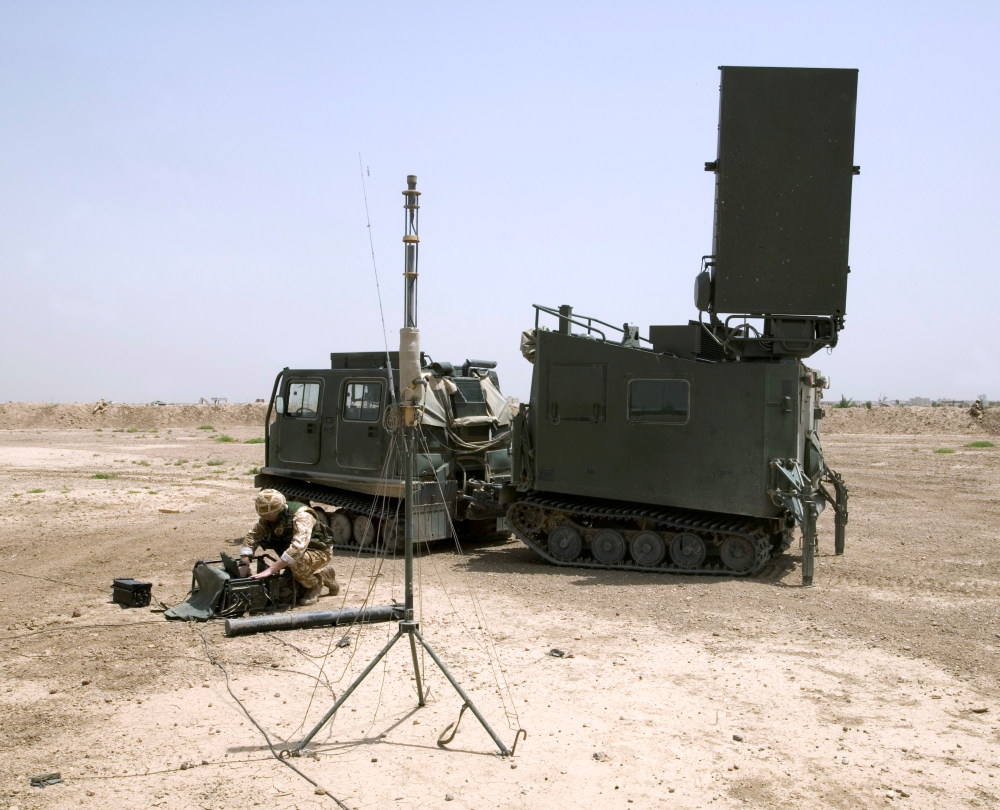
SERPENS is a multi-component, multi-stage program that will completely revolutionize the British Army’s ability to track incoming enemy mortar, rocket and artillery fire, replacing the current 5 TAIPAN (Saab ARTHUR) radars and HALO acoustic sensors with a greater number of more capable systems. The main component of SERPENS include a Deep Find radar, a Close Find radar and an integrated acoustic and electro-optic passive detection system, all supported by a Command and Control system to fuse sensor data, enable cross-cueing and intelligence gathering. The program has been in existence for many years in one form or another but so far has struggled to get off the ground.
The Ministry of Defence has now finally kick-started the open competition for the Close Find requirement. The invite to tender is being released to interested companies to enable initial evaluations ahead of an event to be organized in cooperation with industry to gather live fire data. This demonstration is planned to happen in the first 12 days of September on the Salisbury Plain Training Area.
Interestingly, the notice says the companies will be requested to hand the MoD a data package about their product to enable “preliminary design work to commence to de-risk installation onto an Authority vehicle of choice, assumed to be FOXHOUND”. This seems quite ambitious as FOXHOUND is a compact vehicle. It also indirectly suggests that thinking for new FOXHOUND Mk 2s, including in new variants and set-ups, is very much progressing behind the scenes as part of the Land Mobility Program.
Back in 2022, Babcock had teamed with Israel’s IAI Elta to propose the latter’s 2311 Compact Multi-Mission Radar (C-MMR) for the Close Find requirement. This proven solution has been selected elsewhere in NATO, notably in Finland, but integration onto the FOXHOUND might prove to be pretty challenging. The Labour government’s tension with Israel over Gaza might be another obstacle that might lead Babcock and Elta to quietly part ways, something we have already seen happening on with the breakdown of the Babcock – Elbit team up for the SLING 120 mm mortar.
The program currently plans to procure a quantity of 25 Close Find Radars using a competitive flexible procedure under a staged delivery schedule to complete during calendar year 2027. Deliveries of the radars must happen over a 2-year period, followed by an initial 4 years of in-service support. Contract start is envisaged for 29 May 2026.
Back in February, the MoD had released the invite to tender for the Acoustic Weapon Locating System. If terms will not be extended, the deadline was indicated as 23 March. Contract award should follow in September. Interestingly, the Request for Information published in September 2023 specified that “the Passive system will comprise an integrated suite of acoustic and electro-optic sensors”.
It was further specified that SERPENS does not intend to procure passive radar technology although the technology might be reconsidered in the future.
As for Deep Fire, the same RFI specified that the UK intended to “adopt a collaborative approach with the Netherlands on its Deep Find radar, working with NATO allies to secure counterfires capability against deep fires threats. The procurement with the Netherlands will be undertaken under a new Memorandum of Understanding and will build on the GM200 sensor as part of a multinational NATO community”.
There has however been no publicly observable progress against that intent since.
It is also intended that SERPENS will have its own Command and Control system to fuse sensor data, enable cross-cueing and intelligence gathering, and aid mission planning of Weapon Locating Systems, integrated within the wider ISTAR “ecosystem” of the British Army.








 (300 x 70 px) (1).png)
